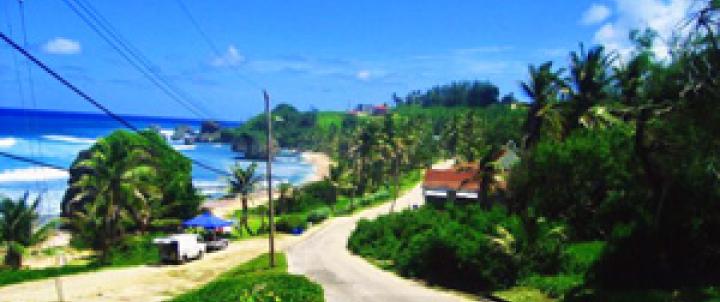5 little known facts about Barbados

Barbados has quite a rich history overflowing with compelling stories of which many are unknown and are worthy of adding to your bucket list!
Everyone knows that Barbados is the gem of the Caribbean; everyone knows about the gorgeous beaches and stunning sunsets; but not many persons know about the following five (5) intriguing facts about our island.
Glorious Grapefruit
Grapefruits are touted as being fat burning and high in Vitamin A and C, but did you know that they were first developed in Barbados? According to an old Barbadian legend, grapefruits were developed in the picturesque Welchman Hall Gully in the 18th century! Grapefruit is related to the Shaddock and Sweet Orange, which originated in Asia. There was a natural cross-pollination between Shaddock and orange. The result? “Forbidden Fruit” (as it was initially named years ago) was born but the name was changed to ‘Grapefruit’ because it grows in large “grape-like clusters.”
This original Barbadian fruit is now well-known worldwide for its health properties and tangy-citrus taste. Try it in segments or cut in half and sprinkled with brown sugar for a delectable and nutritious snack.
Source: Barbados.org
Barbados Green Monkeys
Take a drive around Barbados and you will see these mischievous little green monkeys darting across roads (even highways), frolicking in gullies (even gardens) and climbing trees in search of delicious, fresh fruit (more like stealing coveted mangoes!)
These green monkeys found in Barbados originally came from Senegal and The Gambia in West Africa approximately 350 years ago.
These frisky animals are often found in the countryside in the parishes of St. John, St. Joseph, St. Andrew and St. Thomas due to the lush vegetation. You will still have the chance to see them in more developed suburban areas like Warrens and Christ Church.
The infants often appear blue in colour, as they have little fur when they are born. However, as they mature, they develop a thick fur that is brownish-grey in colour with specks of yellow and olive green. In some lights, the fur has an overall green appearance ... hence the name the "Green Monkey".*
*Source: Barbados.org
Bold Baobab Trees
If you have a love for travel, history and amazing wonders of the world, then a visit to Barbados is a must! And while in Barbados, a visit to see the two amazing baobab trees (Adansonia digitate), with possibly the widest tree-trunks to be found in the Caribbean, is another must!
This tree is approximately over 1,000 years old and it is believed that a seed floated all the way from Guinea, West Africa across the Atlantic to the shores of Barbados and eventually grew into this wondrous tree!
You can find two of these trees in Queen’s Park and Warrens, both in the parish of St. Michael.
Blackbelly Sheep
Imagine driving down the road in the countryside, taking in the breathtaking scenery on your way to the beach, and suddenly a flock of sheep leisurely crosses the road causing you to slam brakes. Your heart is pumping wildly but the sheep are unruffled. Meet Barbados’ Blackbelly sheep!
It is believed that it has African ancestry but there is still evidence that the breed seen today had been developed, by the people on the island, from sheep brought by ships fairly early in the period after Europeans first arrived.
Many enjoy this delicacy in a stew, baked or curried.
Morgan Lewis Windmill
Imagine being able to watch live and in full colour an age old method of producing sugar cane juice, once popular many years ago in Barbados! We’re talking about the Morgan Lewis Windmill, one of the only two intact and restored sugar mills in the Caribbean. The other intact windmill is in Betty’s Hope Estate, Antigua.
Maintained by the Barbados National Trust, the mill includes an exhibit of the equipment used to produce sugar at the time when the industry was run by wind power generated from mills such as this one.
Witness the intricacies of the grinding of sugar cane during one of the Barbados National Trust’s demonstrations, which usually takes place from December until April every year. The best part, you get to taste the delicious, natural sugar cane juice!
Source: Barbados.org













